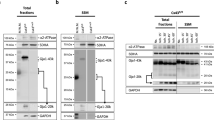Abstract
During capture and storage of tuna, a small but significant number of fish display a characteristic muscle degeneration termed tuna burn. Based on detailed amino acid analyses and on previous studies of metabolite changes during online swimming of tuna, a new model of the etiology of burnt muscle is developed. According to this model oxygen-lack to white muscle (developing initially during capture) leads to a metabolic collapse, to a drop in ATP concentration, to a consequent opening of ATP-dependent K+ channels, with an efflux of K+, and thus to a collapse of membrane potential. When the membrane potential falls far enough to open voltage-dependent Ca++ channels, Ca++ influx occurs leading to elevated Ca++ concentrations in the cytosol. This process is augmented by simultaneous movement of Ca++ from sarcoplasmic reticulum (SR) and from mitochondria into the cytosol. At high intracellular concentrations Ca++ can be devastating. One of its more notable effects involves the activation of Ca++-dependent proteases, which preferentially target key components of the contractile machinery (troponins, tropomyosin, C-protein, M-protein, Z-discs, α-actinin) and thus cause disassembly of myofilaments prior to any significant hydrolysis of myosin or actin. This process is autocatalytic in the sense that Ca++-activated proteases may act upon SR, thus increasing Na+ /Ca++ exchange, and ultimately adding more Ca++ to the cytosolic pool. According to this model, the difference between burnt and unburnt regions of the myotome is simply due to how far each region has moved along this self-destructive, autocatalytic pathway. The model is helpful in explaining previously perplexing data and in making useful (i.e. measurable) predictions for further studies of this important problem.
Similar content being viewed by others
References cited
Abc, H., Dobson, G.P., Hoeger, U., and Parkhouse, W.S. 1985. Role of histidine-related compounds to intracellular buffering in fish skeletal muscle. Am. J. Physiol. 249: R449-R454.
Abe, H., Brill, R.W., and Hochachka, P.W. 1986. Metabolism of L-histidine, carnosinc, and anserine in skipjack tuna. Physiol. Zool. 59: 439–450.
Bird, J.W.C., Carter, J.H., Triemer, R.E., Brooks, R.M., and Spainer, A.M. 1980. Proteinases in cardiac and skeletal muscle. Fed. Proc. 39: 20–25.
Cramer, J.I., Nakamura, R.M., Dizon, A.E., and Ikehara, W.N. 1981. Burnt tuna: Conditions leading to rapid deterioration in the quality of raw tuna. Mar. Fish. Rev. 43: 12–16.
Guppy, M., Hulbert, W.C., and Hochachka, P.W. 1979. Metabolic sources of heat and power in tuna muscles. II. Enzyme and metabolic profiles. J. Exp. Biol. 82: 303–320.
Guppy, M. 1978. The biochemistry of skipjack musculature and its application to metabolic control in vertebrale white muscle. Ph.D. Thesis, University of British Columbia, Canada.
Hattori, A., and Takahashi, K. 1982. Calcium induced weakening of skeletal muscle Z dises. J. Biochem. (Tokyo) 9: 381–390.
Hochachka, P.W. 1980 Living Without Oxygen. Harvard Univ. Press. Cambridge.
Hochachka, P.W. 1985a. Fuels and pathways as designed systems for support of muscle work. J. Exp. Biol. 115: 149–164.
Hochachka, P.W. 1985b. Assessing metabolic strategies for surviving O2 lack; Role of metabolic arrest coupled with channel arrest. Mol. Physiol. 8: 331–350.
Hochachka, P.W. 1986. Defense strategies against hypoxia and hypothermia. Science 231: 234–241.
Hochachka, P.W. and Somero, G.N. 1984. Biochemical Adaptation, Princeton Univ. Press, Princeton.
Konagaya, S. and Konagava, T. 1979. Acid denaturation of myofibrillar proteins as the main cause of formation of ‘yakeniku’, a spontaneously done meat, in red meat fish. Bull. Jap. Soc. Sci. Fish. 45: 245.
Lowell, B.C., Ruderman, N.B., and Goodman, M.N. 1986. Evidenee that lysosomes are not involved in the degradation of myofibrillar proteins in rat skeletal muscle. Biochem. J. 234: 237–240.
Mommsen, T.P., French, C.J. and Hochachka, P.W. 1980. Sites and patterns of protein and amino acid utilization during the spawning migration of salmon. Can J. Zool. 58: 1785–1799.
Nakamura, K., Fujii, Y., and Ishikawa, S. 1977. Turbid meat of tuna. I. Study of its possible causes. Bull. Tokai Reg. Fishery Lab. 90: 39–43.
Pemrick, S.M. and Grebenau, R.C. 1984. Qualitative analysis of skeletal myosin as substrate for calcium activated neutral protease. Comparison of filamentous and soluble native and L-2-deficient myosin. J. Cell Biol. 99: 2297–2308.
Phillipson, K.D. and Nishimoto, A.Y. 1982. Stimulation of sodium calcium exchange in cardiac sarcolemmal vesicles by proteinase pretreatment. Am. J. Physiol. 243: C191-C195.
Reddy, M.K., Rabinowitz, M., Zak, R. 1983. Stringent requirement for calcium in the removal of Z-lines and alpha-actinin from isolated myofibrils by calcium activated neutral proteinase. Biochem. J. 209: 635–642.
Spruce, A.E., Standen, N.B., Stanfield, P.R. 1985. Voltagedependent ATP-sensitive potassium channels of skeletal muscle membrane. Nature, Fond. 316: 736–738.
Tonomura, Y. 1973. Muscle Proteins, Muscle Contraction, and Cation Transport. Univ. Park Press, Baltimore.
Zeman, R.J., Kameyama, T., Matsumoto, K., Bernstein, P., and Ellinger, J.D. 1985. Regulation of protein degradation in muscle by calcium. Evidence for enhanced nonlysosomal proteolysis associated with elevated cytosolic calcium. J. Biol. Chem. 260: 13619–13624.
Author information
Authors and Affiliations
Rights and permissions
About this article
Cite this article
Hochachka, P.W., Brill, R.W. Autocatalytic pathways to cell death: A new analysis of the tuna burn problem. Fish Physiol Biochem 4, 81–87 (1987). https://doi.org/10.1007/BF02044317
Issue Date:
DOI: https://doi.org/10.1007/BF02044317




